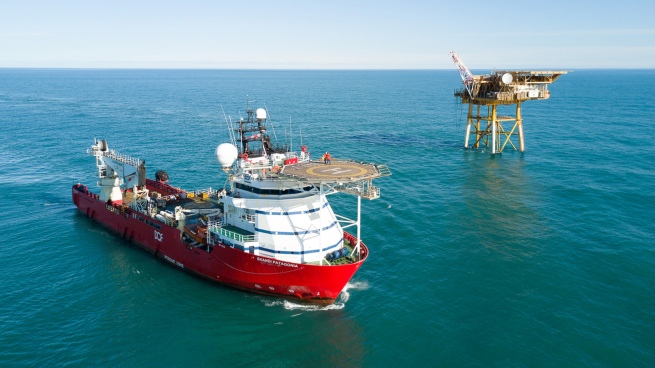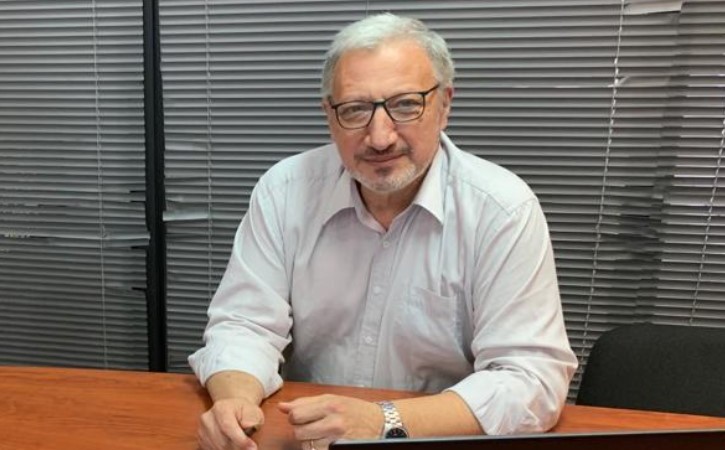The Fénix gas production project in the Austral Basin is already underway with the construction of the platform that will arrive in the country at the end of 2023, which will be operated by the French oil company Total Energies for the next 15 years in the Argentine Sea, off the coast of Tierra del Fuego.
The director for the Southern Cone of Total Energies, Javier Rielo, explained in an interview with Télam, the investment decision process announced this week by the consortium that the French company integrates with its partners, the German Wintersahll and the Argentine Pan American Energy.
The scope of the benefits of the Gas.Ar Plan for offshore projects and the incentives for hydrocarbon production were the reasons that ended up deciding the investment of US$ 700 million in the development of the project that is added to the existing ones and that currently contribute about 16 million m3/day.
Fénix is part of the Cuenca Marina Austral-1 (CMA-1) concession, an offshore gas project located 60 kilometers from the coast in the southern Argentine Sea.which from its entry into operations at the beginning of 2025 will deliver some 10 million m3 of natural gas per day to the system.
“The project was already technically mature, but what has validated the decision and finally finished giving it shape was the extension of the 10-year concessions” decided in April by the national government through Decree 195, which extended the license from 1 May 2031.
Then “in August the appropriate fiscal framework was established” through resolutions 625 and 630 of the Ministry of Economy, which allowed Fénix to be included in the tax and customs regime created by Law 19,640 for the province of Tierra del Fuego.
Thus, federal tax exemptions in the Special Customs Area were added to the consortium’s economic equation as income taxes; VAT and internal taxes, for the operation.

“With the Gas Plan we were able to define a horizon that, although it is not a price that fully satisfies, allows us to consolidate a project that is solid and that gives investors like us certainty of time”, since they are contracts for eight years contemplated in the launch of the program.
In that sense, Rielo explained that the problem for the industry “is not having a price that can fluctuate, but the worst thing for the investor is not having certainty or having a certain certainty when the variables on which a decision is being based do not go to change completely.”
“Today we know what is ahead, it is what the Gas Plan has achieved, giving a horizon of eight years which, in the case of Fénix, allows us to start production at the beginning of 2025 and until the end of 2028 to have a price -although lower than international context – for at least four years.
With these regulatory certainties, the consortium operated by Total has already launched -through the Italian contractor Rosetti- the construction of the platform that will reach the Austral Sea at the end of 2023, to finalize its installation in the first half of 2024 including an underwater gas pipeline of 30 kilometers.
The development of the deposit will be complemented in the second half of 2024 with the drilling of three horizontal wells, at a water depth of 70 meters, an operation that will later be fully automated on the platform and monitored from land.
Once commissioned, which is scheduled for early 2025, Fénix will produce around 10 million additional cubic meters of natural gas per day for more than 15 years, equivalent to 70,000 barrels of oil per day.
Currently, the four Cañadón Alfa, Aries, Carina and Vega Pléyade gas fields produce in CMA-1, supplying 16% of Argentina’s natural gas demand.
Along with the offshore project, Rielo highlighted that the company is also focused on strengthening its operations in Vaca Muerta and plans to double the gas it offers from the Aguada Pichana Este block next year.
It is one of the Neuquén Basin blocks with the highest current production, together with El Orejano (YPF), Aguada Pichana Oeste (PAE), and Aguada de la Arena (YPF), and made Total the third largest producer of the basin, behind YPF and Tecpetrol.
Overall, last year – two years after starting its massive development – it reached some 8 MMm3/d in Aguada Pichana, and in line with the company’s global objectives of strengthening its gas positions, this year it reached 11 MMm3/d .
“This allows us to project 14 MMm3/d in the first half of 2023 and 16 MMm3/d by the end of the same year, that is, doubling production in these two years,” explained Rielo, asserting that they are “very focused on Aguada Pichana This, convinced that gas is the path of energy transition because it is five times less polluting than liquids”.
To this performance of the block will be added at least another 3 million from the areas that the company also operates in San Roque and Rincón de la Ceniza with associated gas, while they seek to accelerate the development of the La Escalonada area.
Finally, regarding the vision of the Vaca Muerta company, Rielo expressed: “No one has any doubt that it is a great wealth that is under the surface and demands that everyone put together a puzzle, without pettiness, with common objectives and with the main focus that Argentina becomes a great gas and oil producing country that is as clean as possible”.
















